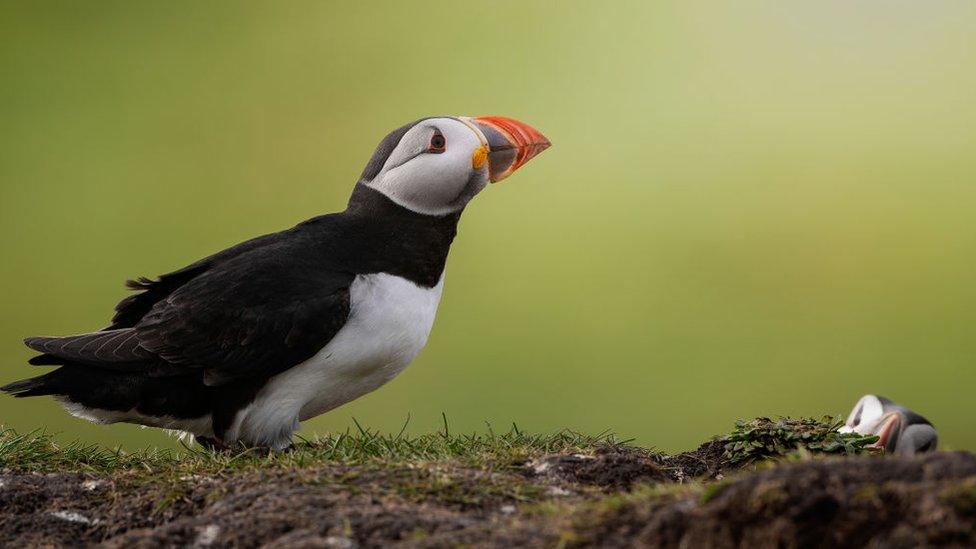Almost half of seabird populations have declined in the UK and Ireland
- Published
- comments

The Atlantic Puffin is one of the seabirds which has seen a fall in numbers across the different regions, with just a few sites showing an increase in population
Almost half of seabird species in the UK and Ireland have seen a fall in their numbers over the past 20 years, according to a new survey.
The Seabirds Count census, which surveyed birds between 2015 and 2021, provides population estimates for the 25 regularly breeding species found in Britain, Ireland, Isle of Man and the Channel Islands.
It revealed that 11 of 21 of the species monitored have seen a decline in their population since the last census in 1998-2002.
Five species have remained stable, while another five have an increase in their numbers. Some of these increases have been linked to conservation work to help protect certain species.
The remaining four bird species of the 25 surveyed, now have up to date breeding population estimates, but these can't be compared to previous results because of changes and improvements in survey methods.
What else did the survey show?
Some species like the razorbill have seen an increase in their numbers in some regions
The results of the census also varied across different regions. Scotland has seen the biggest fall in seabird numbers across the different species according to the survey, with 14 of the 20 breeding seabird species in decline.
Eight species in England have seen an increase in numbers, while six have fallen and five have remained stable.
In Wales, 11 species are increasing, while six are declining and Northern Ireland has seen a decline in numbers for four species, while six are stable and seven are increasing.
Seabirds are doing well in the Republic of Ireland, with 15 species increasing and only two declining.
What's causing the fall in the number of some seabird species?
Commercial fishing can impact food sources for seabirds
Although the main reasons for falling populations vary between species and locations, there are some common themes which have led to the fall in some seabirds' numbers.
Predators are a key factor as eggs, chicks and adults can be eaten by other species which either live in the regions, or have come from elsewhere.
Climate change has also had a big impact on some birds. Poor weather conditions are causing nest sites to be swept away and making it more difficult for the birds to search for food and other things they need.
Increased water temperatures have reduced the availability of key food sources like certain types of fish which leads to seabird parents not finding enough food for themselves and their offspring.
Climate change explained in 90 seconds
The lack of food is also affected by commercial fishing, which involves companies catching fish which they then sell on. This can be a particularly big problem during the important breeding season.
"For decades, our seabird populations have been battered by the impact of humans, from the introduction of predators to islands that destroy nests and chicks, to the increasing effects of climate change that are impacting the availability of their food such as sand eels," said Beccy Speight from the RSPB.
"The evidence shows that conservation efforts and smart policies do work, and help increase the resilience of our seabirds to better weather whatever new storm is on the horizon. It is now up to us to protect these amazing birds for future generations."
- Published28 September 2023
- Published3 April 2023
